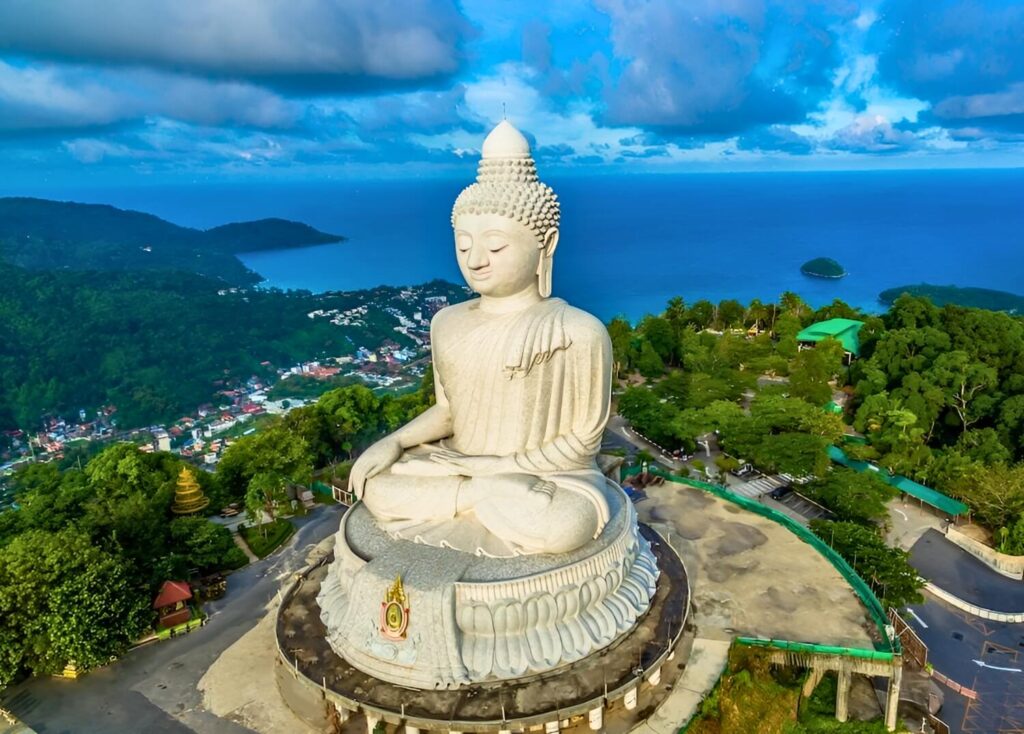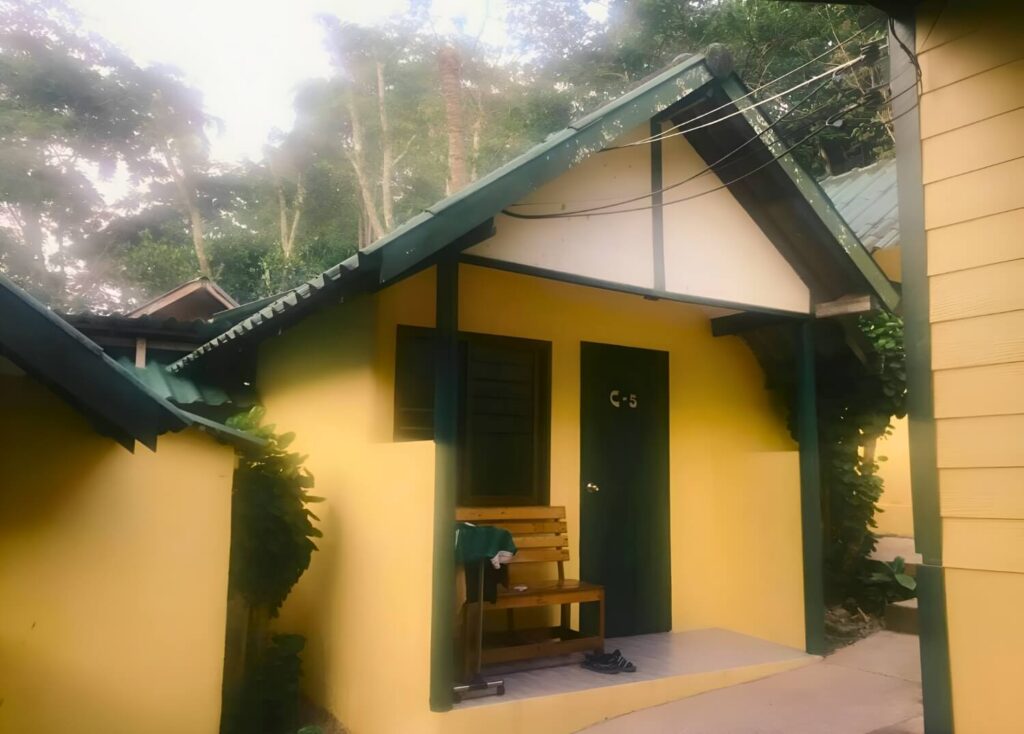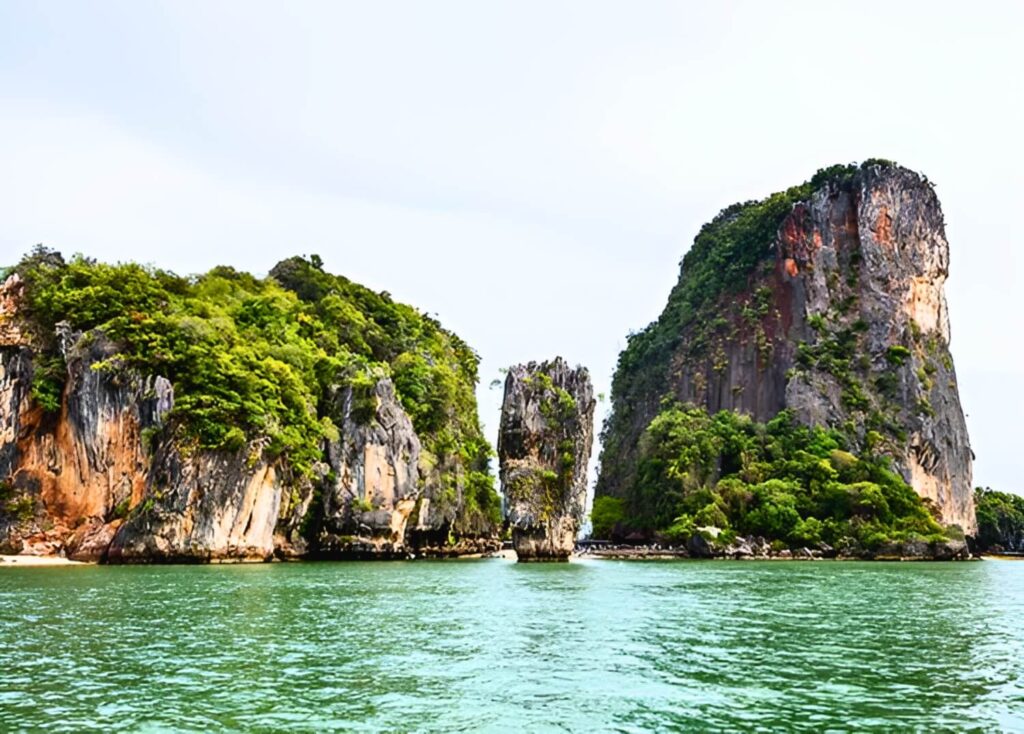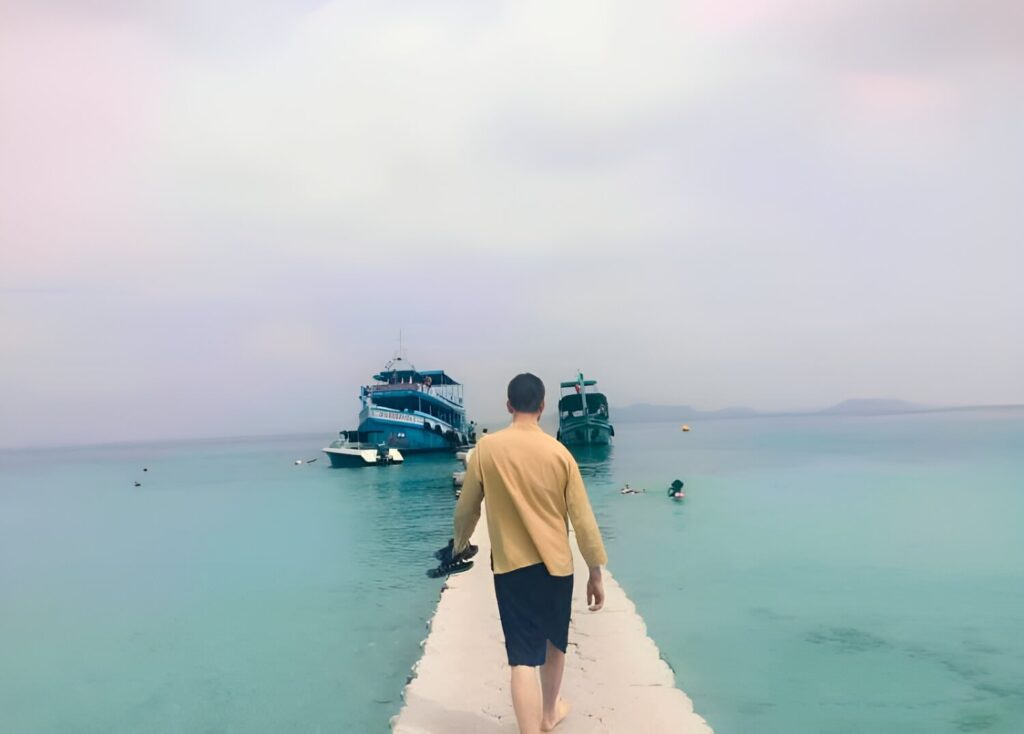Thailand has over 1,000 islands, located in both the Gulf of Thailand and in the Andaman Sea. Because of the abundance of beautiful scenery, turquoise waters, and affordable accommodation available on these islands, travellers flock here in their millions each year, and in this blog, I will explore some of these islands along with other popular tourist destinations here in the Land of Smiles.
In my previous blog, I explored Bangkok, and I invite you to follow me now as we delve further into the beauty of Thailand. As we know, many teachers in Thailand (like me) find island hopping a perfect escape, especially during the holidays.
Phuket: Thailand’s Largest Island Paradise
Phuket is among Thailand’s biggest and busiest islands, located in the south of the country with the province of Krabi lying to its east and Phang Nga to its north. Many teachers who teach English in Thailand regularly visit Phuket for its diverse experiences.
All of the major beaches offer the usual (and super fun) water sports such as windsurfing, snorkeling, and diving. You can do all of these things in Phuket. You can relax on the sandy beaches, enjoy the vibrant, glitzy nightlife, and explore the many hidden temples and markets.

A particular sight that is a must-see is the Big Buddha statue, which is an incredible structure and where you have fantastic views of the island. It’s recommended that you travel here early in the morning to avoid the largest crowds.
A word of caution. Like any major tourist destination around the world, be careful of scams and pickpockets and avoid excessive drinking, particularly on Bangla Road, which can be an extreme example of the Thai nightlife. But, taken in the right spirit and with some caution, a great time can be had in Phuket.
Koh Samui: A Luxurious Island Experience
Koh Samui is another of the larger Thai islands that offers an eclectic mix of accommodation, from budget beachside bungalows to luxurious 5-star resorts and villas. For this reason alone, it broadens appeal to many different types of visitors. Thus, Koh Samui provides teachers in Thailand with luxurious relaxation after a busy school term.
The island lies in the Gulf of Thailand off the east coast and is well known for its dense and mountainous rainforest. If you’re not a beach person, then the historic Fisherman’s Village may interest you here. Offering a diverse range of shops and services, there should be something here for every traveller.
If arriving in Koh Samui by air, you may spot the Big Buddha Temple, located off the island’s northeastern corner. The seated Buddha statue is 12 metres tall and remains one of the island’s most popular attractions. As anybody who has spent a significant amount of time here will now surely realise, the Buddha statues are ubiquitous in nature but always remain a sight to behold. It is well worth a visit.
Koh Chang: The Laid-Back Island Retreat

A personal favourite of mine, Koh Chang or ‘Elephant Island’, is located in the province of Trat, which is about 300 km from Bangkok. Approximately 70% of the island is covered in rainforest, mountains, and beaches giving you an idea of all the fun you can get up to there.
Elephant trekking is particularly popular here, as are all the usual Thai island excursions such as snorkeling and scuba diving. Relative to Phuket and Koh Samui, it is much quieter, but this can be a definite plus for some good quality chill time. The locals are as relaxed as in all of Thailand, and it is a pretty easy place to get around, especially if you spring for a motorbike during your time here.
It was my first island experience here, which I massively enjoyed, leaving me very happy. I highly recommend Koh Chang to anyone teaching in Thailand who needs some relaxation away from busy classrooms.
Ko Samet: Weekend Getaway Gems
Due to its relative proximity to Bangkok when compared with the other islands mentioned here, Ko Samet is a popular weekend breakaway for Thais and expats alike. Located in the province of Rayong, it is a hidden gem as it is not as well known as the other larger islands that bring huge crowds on a regular basis.
Despite this, it has plenty to offer, such as unspoiled white, sandy beaches and crystal clear waters, making it a place to put on your bucket list, particularly if you are based in Bangkok. Another point to mention is that it is located only 80 km from Pattaya, a vibrant coastal city that is very well known for its colourful nightlife.
I have yet to visit here but have been advised that Thai authorities have tried reinventing it as a more family-friendly destination. Although I cannot speak to that, the Thai Tourism Authority has stated that “hundreds of thousands of visitors are drawn each year to windsurf, water ski, swim, sunbathe, snorkel, sail, or to take trips to nearby islands.
Other activities include bungee jumping, cycling, sky diving, go-karting, Muay Thai and paintball,” which tells me that there is an abundance of activities you can get up to on a trip here.
Chiang Mai: The Cultural Capital of the North
Known as the largest city in Northern Thailand, the capital of Chiang Mai province, and the second largest city in Thailand, Chiang Mai has had a rich and storied history since its foundation in 1292. Located on the Ping River, which is itself a major tributary of the Chao Phraya River, it serves as the economic, cultural, and transportation centre for Northern Thailand and even part of neighbouring Myanmar.
Being a cultural hotspot, it is filled with amazing architecture and natural wonders. The Old City is in itself a museum where the ancient walls and temples have withstood time and could tell a thousand stories. Wat Phra Singh is Chiang Mai’s most revered temple and is named after Phra Singh (Lion Buddha), who pilgrims come to see regularly.
The oldest public market in Chiang Mai is Warorot, where vendors sell souvenirs alongside the usual staples of Thai markets: all kinds of food, accessories, clothes, etc.
Phang Nga: Nature’s Spectacular Comeback

Phang Nga is a region devastated by the 2004 Indian Ocean tsunami. Still, it has now recovered and been rebuilt to offer some of the best hiking and snorkeling available in all of Thailand.
Mu Ko Surin National Park is apparently also one of the best diving sites in the country. Thailand’s natural beauty is entirely on display here, and there’s also James Bond Island close by, known for its use in the 1974 Bond movie The Man With The Golden Gun.
Why Travel Deepens the Teaching Journey

Travelling around Thailand is truly rewarding, especially for those who teach in Thailand and have ample holiday periods. This is just a small recommendation of some of Thailand’s most popular tourist spots, but honestly, there are so many more parts of this beautiful country to see that I could write more pages.
It’s hard to put the magic of the country into adequate words at times, but I do feel it’s important to get out there and explore as much as possible when time off allows. We all love teaching, but we are also aware that it can be stressful at times, and I personally find that the more travelling I do, the more I appreciate where we live.
From the friendly locals and the warm embrace of the food to the exquisite beaches and magnificent temples, there truly is a wealth of experiences to enjoy. But there are some tips to always try and remember when out and about. I’ve already mentioned how you should be extra careful in bustling tourist hotspots with regard to keeping yourself and your belongings safe.
This is true the world over, and while I have had nothing but largely positive experiences in my time here, it’s always important to be somewhat vigilant.
Respect Culture, Travel with Purpose

Something just as important, which sometimes gets ignored (accidentally or otherwise) by visitors, is the need to show respect to the Thai people and their culture. The majority of us are guests here, and we should act as such.
It’s so important to be respectful when visiting temples as, although they may be architectural wonders to us, they are places of solemn worship to many Thai people, and thus, we should dress respectfully when we visit them and remove our footwear if we choose to enter.
We should also be highly respectful of Thai monks, who are very important people to many locals. No need to take pictures of them as I’ve seen some travellers do! For the most part, travelling in Thailand is convenient, relatively cheap, and extremely safe.
I’d encourage all who are now here and working to really get out there and take advantage of what’s on your doorstep over the coming weeks and months. Even if it’s only a short weekend break, it can really give great personal satisfaction to see more of the country than just where you currently reside inside it.
Get the camera out and share those photos of all the majestic beauty that you come across. For anyone teaching in Thailand, remember to always show respect to Thai culture and stay safe while travelling. Take full advantage of living in this incredible country.
I’ll be back for part 3 of the travelling opportunities while living in Thailand, where I will discuss some of our neighbouring countries that are very accessible from here. Talk soon!










![[BFITS] Be Like Millie_Volunteering Beyond the Classroom – Painting, Panthers, and Powerful Art!](https://bfitsthailand.com/wp-content/uploads/2025/01/BFITS-Be-Like-Millie_Volunteering-Beyond-the-Classroom-–-Painting-Panthers-and-Powerful-Art-300x109.png)







